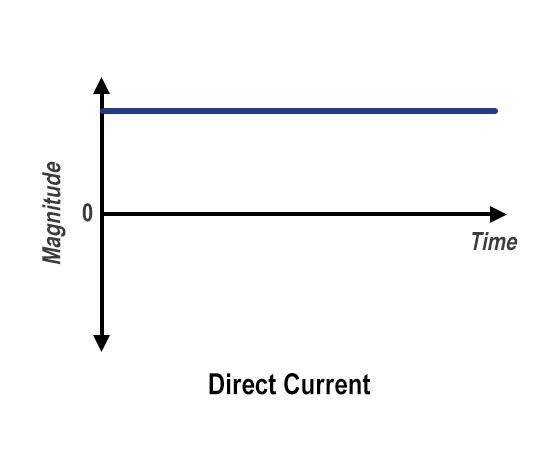Currently, electricity has become one of the most essential things to survive for humans. Life has become more comfortable by using almost every device on electricity. Electricity is the flow of charges through any type of conductor and the electrical signals come in multiple shapes and sizes. The most common categorization is AC and DC along with which comes how to convert AC to DC and vice versa.
Before we start discussing why there is a need to convert alternating current to the direct current, let’s have a look on:
Difference between AC and DC
AC the “Alternating Current”
 The alternating current tells the flow of electron which changes its direction continuously. Here, first the current flows in one direction and then the other.
The alternating current tells the flow of electron which changes its direction continuously. Here, first the current flows in one direction and then the other.
An alternator can be used to create an alternating current. The alternating current that we use in our homes has a variety of voltages that produce a sine wave to produce current.
DC the “Direct Current”



You can also use a rectifier to convert the alternating current into the direct current. Batteries also play a major role in providing direct current.
Further in this article, we’re going to discuss why we need to convert AC to DC.
AC or DC? Which one is the best?
Without any doubt, DC is quite better than AC. Because it is easier to transform electrons without using the electrons.
Also, DC appliances are more efficient as compared with AC appliances. The direct current is compatible with almost every energy source just like solar and wind.
AC signals can’t be stored whereas the DC power can be easily stored for better use.
Thus, to store electrical energy, first, you have to convert it into a direct current.
Also, the DC appliances need some constant voltages and to get those voltages, simply convert AC into DC.
You can use a rectifier to easily convert AC into the direct current.
Precision rectifiers are also used on a very large scale to get an accurate and efficient ac to dc conversion. AC and DC both have their own advantages and disadvantages as well. So, simply select the best one for any of us.
Need for AC to Dc Conversion
The reasons that why we do we need to convert AC to Dc are mentioned below:
1. Reusable Energy Integration
DC microgrids don’t need multiple converts and inverters. We convert AC to DC to make a simpler and more efficient coupling of renewable energy generators. Energy systems like solar, wind power, and fuel cells work better with DC power.
It also makes it easier to harvest even the smallest amount of energy without the need for expensive circuit devices.
Unlike the AC power, with DC there is no specific need to consider face correction, filtering, and line balancing. And according to EPRI (Electric Power Research Institute), DC facilitates efficient site-based alternative energy sources.
2. Efficient Energy Storage
The ac to dc conversion provides efficient energy storage. The architecture of DC micro-grids is distributed bus-based which allows simpler and efficient coupling of native DC electric storage.
The latest devices like electricity and ultra-capacitors are widely used for this purpose.
DC power makes storage easier and more efficient in terms of storage capacity and overall expenses.
It also facilitates local energy storage which makes for the easy use of intermittent and distributed energy generators.
Also, DC energy generators are easily dispatchable which makes them easy to be transported to remote locations.
3. Easy Control and Monitoring
Most latest monitoring systems and sensors run on direct current and not on alternating current.
That is because most of these devices are digital and microprocessors based and using DC for these devices greatly amplify air performance.
This also eliminates converting DC power to AC for using these sensors and monitoring devices. With less conversion needed, system efficiency increases, and system costs are reduced to a huge extend.
The use of direct current based micro-grids simplifies the electronics used in the system. And it also makes the system more easily manageable as well.
Also check: How to get free tinder plus
4. Enhanced System Reliability
The structure of micro-grids bases on the direct current ensures better service reliability in the public grid.
These grids can be easily isolated from one another.
So, if a grid fails, the other systems stay functional and the rest of the system remains intact.
There is also a reduction in the subsystems and device-level power conversion. This helps to reduce the risk of failure in the system in the first place.
The enhanced system reliability at the public grid level is also one of the reasons to convert AC to DC current.
With less risk of system failures, maintenance costs are reduced as well.
5. Suited for Electric Vehicles
The electric vehicle’s technology is based entirely on a modulated DC electrical system. These vehicles are going to need to be charged, and DC-based grids are going to be a huge help with that. Once the AC to DC conversion happens in the grid, the DC produced can directly charge the electric vehicles.
This eliminates the need for conversion of AC to DC at all times. With less power wastage through unnecessary conversion and inversion from AC to DC system become more efficient.
As battery-powered and hybrid electric vehicles become more common, the use of DC-based storage connectivity will also increase as well.
Also, the conversion of ac to dc just to provide power to the heating elements is not a good idea. So keep these kinds of things on alternating current.
For converting AC to DC, you can use multiple online converters to convert AC volts to DC volts. You can use dc voltage to ac voltage calculator to convert DC volts into AC volts.
Simply put the required volts in the input box to calculate the exact voltages.
Wrapping Up







